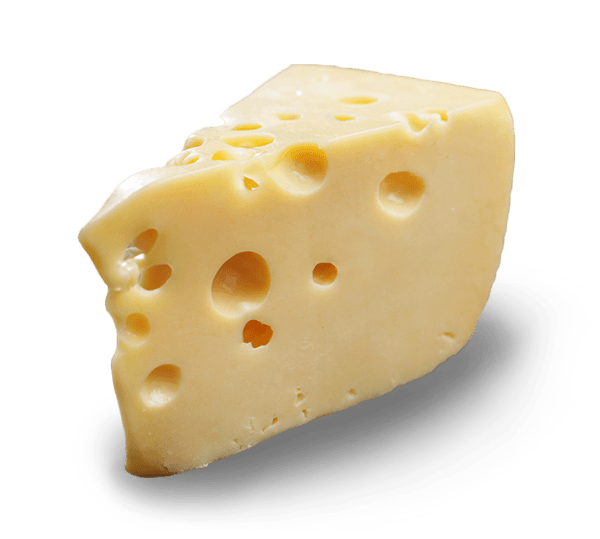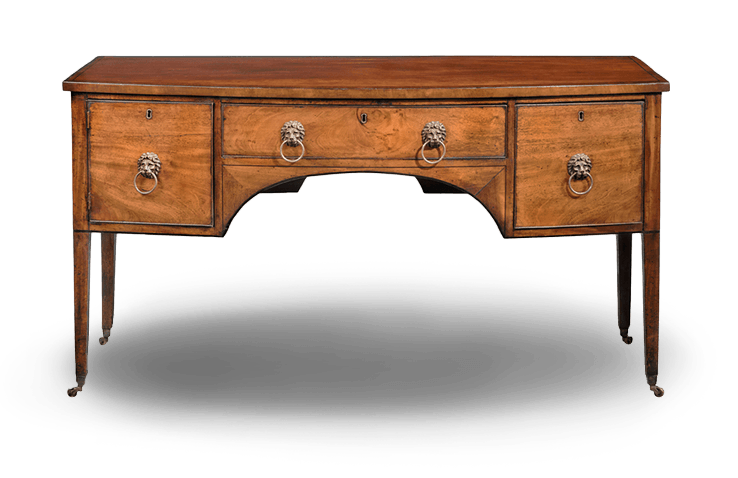Your First Tournament
Magic tournaments are some of the most fun you can have playing the game.
I remember going to a store for my first Magic tournament about sixteen years ago. Walking in, I had no idea what to expect. I nearly didn't go. A bout of nervousness gripped my stomach. But I took a deep breath and clutched my cards closely as I strolled through the entryway.
What was it going to be like?
Turns out, there was nothing to be worried about. All that concern quickly dissipated, and I had a blast! I played games and met people I would have never had the opportunity to otherwise. I started coming back week after week after week.
Flash forward to today. Many of my best friends and most cherished memories have come from playing Magic tournaments. And I may never have experienced any of it if I hadn't taken a deep breath and walked through that door.
At the same time, I wish I would have known what to expect going in.
Maybe you've played a lot of Magic, but haven't quite taken the plunge into in-store play. Maybe a tournament has idly caught your attention, and you'd like to know what you should be ready for. Or maybe you're fresh to Magic, heading to your first event, and, just like me, feel a little nervous.
That's what today's article is about: explaining some basics of what to expect structurally at an in-store Magic tournament!
Now, before going further, I should give the caveat that there are always exceptions. It would be impossible for me to account for every unique thing that each store in the world does. But the vast, vast, vast number of Magic tournaments happening in stores, such as Friday Night Magic, will work this way. If you want any specifics, always check in with the local store you're going to.
With all that said, let's hop into it!
Format
The very first thing to find out about before going to a tournament is what format will it be.
Magic has a wide variety of ways to play. Different tournament formats lend themselves to slightly different play styles. (And you can read up on them all here.)
I'll help narrow it down and say that most in-store events you find are going to be Standard, Booster Draft, or Sealed Deck. Knowing which of the formats it is will impact what you should bring.
Standard is a format in which only the most recent two years of Magic cards are legal. (You can view which sets are currently legal in Standard here.) You bring your own deck for this. Be sure to check the cards in your deck to make sure they're all A-okay for the format. If you're relatively new and have just bought some of the recent sets, then everything in your deck should be fine—but it never hurts to double check.
Booster Draft and Sealed Deck, on the other hand, are beloved tournament formats where you don't even bring your own deck. Instead, you'll be handed some packs and build your deck right then and there.
In Sealed Deck, you open six packs and get to build a 40-card deck out of those packs (plus as many basic lands as you want to add). Pretty straightforward. You can find out more about Sealed Deck here.
In Booster Draft, you're given three boosters and sit around a table with several other players (usually eight). You open one of your packs, take a card you want for your 40-card deck, and then pass the rest to the drafter on your left. You repeat this process over and over again until eventually all the cards (and packs) are gone and you have a pile of cards from which to build your deck. You can read more on Booster Draft here.
As a point of etiquette, you shouldn't be talking about what you're taking during a draft while it's happening. As tempting as it can be to scream out, "Here comes Tezzeret, you fools!" when you see Tezzeret the Schemer staring back at you in a pack, revealing information about what is being drafted can alter other people's decisions in a not-so-great (or legal) way. Hold all your battle cries of victory until you're actually in a game.
Limited is always a great way to play if you're not sure about your deck yet since it puts everybody on an even playing field—plus, you'll get to walk away with some cool new cards.
If you don't know what format the store you're going to is playing, you can always call and ask or check their website if they have one. Alternatively, the Magic store locator is a great tool for finding events. It can find you both a store to play at as well as a format you want to play.
If you're going to something like Friday Night Magic, some stores might be running multiple formats, so keep that in mind as well.
Okay, so you have a store and format picked out. You have the materials you think you'll need. You actually head down to the game store and walk in—what now?
Into the Store
Once you're in the store, the first thing you should do is sign up for the tournament! It's easy to overlook this step, but it's an important one. The store's tournament organizer needs to enter you into their system so they can pair you with opponents.
Find the store owner and let them know you want to sign up. You'll likely pay them some amount of an entry fee for the event (though sometimes stores will run Standard events for free). This goes toward prizes, your packs (if playing Booster Draft or Sealed), and making sure that the event is run well. Then, you will probably get this potentially-baffling question: "What's your DCI number?"
Your DCI number is just a player number used to track your play. It's cool for you because it lets you see every event you've ever played; I can look up that first event I ever played in sixteen years ago and see exactly how I did and who I played against! (I sometimes do this when I'm feeling nostalgic.) And for the store, it's important so they can put you into their software. If you don't have a DCI number—which is likely the case if you've never been to an event before—getting one is actually quite easy. Simply head to accounts.wizards.com and sign up! It's a total breeze of a process. You can even do it before you set foot in your local store.
Okay, once you've signed up, you're good to go. Now you can just hang around in the store waiting for the event to begin. It's a great chance to meet people, maybe get some practice games in, or just relax. And then the event will begin.
Now, if you're playing Booster Draft or Sealed Deck, your event will begin by you getting the packs and going through the process of making your deck. If you're playing Standard, then you'll hop right into the playing bit. Either way, you'll get to Round 1 eventually.
. . . Hey, what does a "round" mean anyway?
Welcome to Round 1
The vast, vast majority of all Magic tournaments are done using a method called "Swiss pairings," which means you'll play a set number of rounds over the course of the event. It is not single-elimination. This is very important; I have seen far too many players leave after losing a match when you're allowed to keep playing the entire night!
Always double-check with the store, of course. Sometimes you will see things like single-elimination drafts, but generally you will be playing Swiss. You can play each and every round of the tournament. Usually at an in-store event, you're looking at three to five rounds, but there could be some variance depending on the kind of tournament.
Ah, good ol' Swiss.

What does a round consist of? A round is one best-of-three-games match against one opponent. You'll sit across from another participant and play at least two games, maybe three.
The tournament organizer will announce the rounds either verbally or put up a pairings sheet that has your name on it. Find the person opposite your name—that's your opponent! Some stores may also have assigned tables, so be sure to note your table number as well in that case so you can get to the table with your opponent.
Feel free to talk to your opponent and have fun! When you're shuffling up for your first game is a great time to get to talk and learn about their experience with Magic.
Okay. So what should you expect in a match? Let's run over a few things.
First of all, after you finish shuffling, you should present your deck to your opponent for them to shuffle. It's tournament etiquette to do so, and you should shuffle your opponent's deck as well. This isn't rude or anything, and it certainly doesn't imply you think your opponent is a cheater. In fact, it is very unlikely you ever will encounter somebody who is stacking their deck. Shuffling your opponent's deck is just good practice and also a tournament rule.
What next? Begin playing!
After the first game, you'll have a chance to dip into your sideboard.

No, not that kind of sideboard. A Magic sideboard!
In Booster Draft or Sealed Deck, your sideboard is everything you aren't playing in your main deck. In Standard, it's fifteen cards you selected to bring with you before the tournament. This is a way to modify your deck to make it better versus your opponent. For example, if your opponent is playing a lot of artifacts, you might sideboard in some additional cards that are good against artifacts.
After the match, hang out and wait for the next round to begin. Like before, this is a great chance to meet people, play games, trade, relax, or otherwise. When the next round begins, the tournament organizer will let you know.
If at any point you need to leave, be sure to tell the tournament organizer you want to drop from the event. Hopefully you won't need to do this, but understandably, sometimes things come up and you need to leave early.
Okay. So, three other big things to know.
First, a simple one: I always recommend using pen and paper to keep track of life. At home you might be used to using something like a spindown D20. These are great, wondrous contraptions that I use all the time.
However, in a tournament, having access to your opponent's life total on your piece of paper is a really good idea. You don't need to be asking your opponent about it over and over again. It also lets you take any notes if you want to, such as what you saw in your opponent's hand when you cast your Harsh Scrutiny. If there's ever any kind of life total dispute, having pen and paper to look back on is wonderful—whereas a die can be easily bumped.

Second, if you ever have any kind of dispute about anything, please, I urge you, call a judge. Raise your hand, call out "Judge," and somebody will come over to help you out.
Calling a judge is absolutely not some kind of insult to your opponent or accusation that you think they are cheating or any sign of weakness of your own. It's just a good thing to do. Magic has plenty of tricky interactions and unusual circumstances that can come up in tournament play.
For example, let's say that you accidentally cast your Shock on an opponent's hexproof creature. A turn passes by before either player realizes it. At home, you'd need to adjudicate this ruling with your opponent. But here, leave that up to the judge. That way you get a fair and impartial look at things from someone who knows what to do.
Okay, and finally, one more important piece to the tournament puzzle. Unlike games at home, Magic events must run at a pace ensuring the tournament can finish. The next round can't start until the previous one has ended. This means the games are timed. Don't feel pressured; usually time isn't an issue. You'll have 50 minutes to play out your entire match.
In the event you get to the end of time without a winner, you'll play five more turns back and forth. At the end of that last turn, the match will be called. The player with more game wins in the match wins. Or, if it's tied 1-1 (as is often the case if your match went to time), the game is a draw. Notably, it is not about higher life total or anything in the game, so long as you are playing Swiss pairings.
What does a draw mean for you? Well, excellent segue, dear reader!
Results
In the Swiss system, the scoring is pretty straightforward: you get 3 points for a match win, 1 for a draw, and 0 for a loss. So, if you won two matches and lost two matches, you'd have 6 points.
Stores will usually pay out prizes in one of two ways: by final standing order or just by your record (meaning the number of points you have). You can always ask the tournament organizer at the beginning of the event what the prize payout is going to look like.
For some tournaments, there might be what is called a "Top 8." This means that after all the Swiss rounds, the Top 8 ranking players are taken and then play in a single-elimination bracket for additional prizes and glory. If you made the Top 8, congratulations! If you didn't, you're free to leave; you don't have to stick around for it. (Though you're welcome to stay if you'd like. One of the best ways to get better is to watch people play!)
Time for a Tournament!
Hopefully this helped walk you through what to expect at your first in-store event. If you've never been to one, I really do recommend you give it a whirl.
And when in doubt? Feel free to ask people for help! Generally, Magic players are open to helping people out. If you're not sure what the next step to take in a store is, find somebody who can walk you through it. We were all new once, after all.
Was this helpful for you? Would you like to see more like this? Would an article about going to play in your first major tournament, like a Grand Prix, be useful as well? Let me know! Tweet at me, ask me a question on my Tumblr, or feel free to email me (in English, please) at BeyondBasicsMagic@gmail.com.
I'll be back next week. Your mission in the meanwhile: go check out a tournament this week and have a blast! Let me know how it goes.
Have fun, and I'll talk with you again soon,

